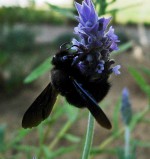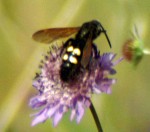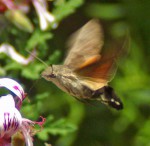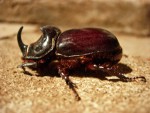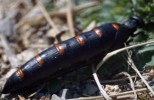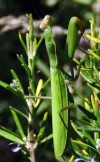La Janda is a comarca, (an area similar to an English county but with no administrative role), located in the province of Cadíz, Southern Spain and composed of several municipalities: Alcalá de los Gazules, Barbate, Benalup -Casa Viejas, Conil de la Frontera, Medina Sidonia, Paterna de Rivera & Vejer de la Frontera. Several ornithologically important sites fall into this comarca, but when birdwatchers refer to ‘La Janda’ it is usually the site that I am describing here, that of the former lake (Antigua Laguna de la Janda) and its immediate surroundings, lying to the northwest of the Strait of Gibraltar, that is meant. It is a very well-known site that is described and acclaimed in most birdwatching guides to the area, but it is always worth visiting and is very rarely ‘busy’ with human visitors, particularly on weekdays in the winter.
The area known as La Janda once featured a vast freshwater lake, La laguna de la Janda, that was surrounded by flood plains and was regarded as one of the most important wetlands in Andalucía. The lake was drained about 50 years ago and the reclaimed land was largely put to agricultural use. Now a patchwork of largely flat fields are planted variously with cotton, grain crops, sunflowers and rice while some are left as pastureland for cattle to graze. A river, el Río Almodóvar flows through the remaining plains and the fields are bordered and separated by an interconnecting network of long straight irrigation dykes, small canals and earth banks.

FEBRUARY:The reeds that fringe the river are dry and brown and many of the fields are bare, but there is fresh greenery on the track sides

DECEMBER- Crop stubble is left to stand and there are Storks, Grey Herons, Egrets and a couple of Glossy Ibis hunting in this field
The variety of habitats encompassed by this relatively compact area and the wide diversity of bird species that are resident or seasonally attracted here combine to make this site unique and always a special place to visit, but in the winter months it can be magical. The area is predominantly low-lying and ‘seasonally wet’ as it frequently floods during periods of heavy rainfall. After periods of sustained heavy rain flooding may be extensive and it’s not too difficult to imagine how it may have looked in its historic natural state. On those occasions the waterfowl, waders and gulls that the site is especially noted for, may be attracted here in the thousands. It is an important zone for passage birds and a wintering ground for Common Crane and Black-winged Kite.
The surrounding areas consist of remnants of Cork Oak woodlands and scattered pine woods surrounded by sandstone hills and outcrops of the Aljibe ranges, so relatively unspoilt countryside still surrounds the site, offering more habitats and a buffer zone to the site, although the army of giant wind turbines built upon it grows ever larger, with every visit seeming to reveal yet more of them. The area remains a rich breeding area for ‘steppe’ birds including Montagu’s Harrier, White Stork, Great and Little Bustard, Stone Curlew and Collared Pratincole.
Access
The main way into the site is from the main A7 (old N340), Cadíz to Malaga road, turning in at km56, directly opposite the turning for Zahara de los Atunes (on your right if coming from the Malaga/Algeciras/Gibraltar direction). There is another entry point further on at km47, signposted for Presa de Celemín.
The network of tracks that lead around the site are all very roughly surfaced and in varying states of repair; pot-holes, especially when full of water should be circumnavigated where possible as some are very deep. It is also possible that heavy rain may have caused subsidence of the sides of the main track in places making passing very difficult. If that is the case it is probably better to turn around, return to the original entry point and drive to the alternative way in at km47 to complete the circuit.




